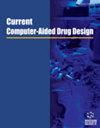An Enhanced Computational Approach Using Multi-kernel Positive Unlabeled Learning for Predicting Drug-target Interactions
IF 1.6
4区 医学
Q4 CHEMISTRY, MEDICINAL
引用次数: 0
Abstract
Background:: In recent years, analyzing complex biological networks to predict future links in such networks has attracted the attention of many medical and computer science researchers. The discovery of new drugs is one of the application cases for predicting future connections in biological networks. The operation of drug-target interactions prediction (DTIP) can be considered a fundamental step in identifying potential interactions between drug and target to identify new drugs. Objective:: The previous studies reveal that predictions are made based on known interactions using computational methods to solve the cost problem and avoid blind study of all interactions. But, there seem to be challenges such as the lack of confirmed negative samples and the low accuracy in some computational methods. Thus, we have proposed an efficient and hybrid approach called MKPUL-BLM to manage some of the aforementioned challenges for predicting drug-target interactions. Methods:: The MKPUL-BLM combins multi-kernel and positive unlabeled learning (PUL) approaches. Our method uses more information to increase accuracy, in addition to minimizing small similarities using network information. Also, potential negative samples are produced using a PUL approach because of lacking negative laboratory samples. Finally, labels are expanded via a semi-supervised. Results:: Our method improved to 0.98 and 0.94 in the old interactions set for the ROCAUC and AUPR criteria, respectively. Also, this method enhanced ROCAUC and AUPR criteria by 0.89 and 0.77 for the new interactions set. Conclusion:: The MKPUL-BLM can be considered an efficient alternative to achieve more reliable predictions in the field of DTIP.利用多核正向无标记学习预测药物靶标相互作用的增强型计算方法
背景近年来,通过分析复杂的生物网络来预测这些网络中未来的联系吸引了许多医学和计算机科学研究人员的关注。发现新药是预测生物网络未来联系的应用案例之一。药物与靶点相互作用预测(DTIP)的操作可视为识别药物与靶点之间潜在相互作用以发现新药的基本步骤。目标:.....:以往的研究表明,预测是基于已知的相互作用,利用计算方法来解决成本问题,并避免对所有相互作用进行盲目研究。但是,目前似乎还存在一些挑战,例如缺乏确证的阴性样本,以及一些计算方法的准确性较低。因此,我们提出了一种名为 MKPUL-BLM 的高效混合方法来应对上述预测药物-靶点相互作用的挑战。方法MKPUL-BLM 结合了多核和正向无标记学习(PUL)方法。除了利用网络信息最小化微小相似性外,我们的方法还利用更多信息来提高准确性。此外,由于缺乏实验室负样本,因此使用 PUL 方法会产生潜在的负样本。最后,通过半监督方式扩展标签。结果我们的方法将旧交互集的 ROCAUC 和 AUPR 标准分别提高到 0.98 和 0.94。此外,在新的交互集上,该方法的 ROCAUC 和 AUPR 标准分别提高了 0.89 和 0.77。结论在 DTIP 领域,MKPUL-BLM 可被视为实现更可靠预测的有效替代方法。
本文章由计算机程序翻译,如有差异,请以英文原文为准。
求助全文
约1分钟内获得全文
求助全文
来源期刊

Current computer-aided drug design
医学-计算机:跨学科应用
CiteScore
3.70
自引率
5.90%
发文量
46
审稿时长
>12 weeks
期刊介绍:
Aims & Scope
Current Computer-Aided Drug Design aims to publish all the latest developments in drug design based on computational techniques. The field of computer-aided drug design has had extensive impact in the area of drug design.
Current Computer-Aided Drug Design is an essential journal for all medicinal chemists who wish to be kept informed and up-to-date with all the latest and important developments in computer-aided methodologies and their applications in drug discovery. Each issue contains a series of timely, in-depth reviews, original research articles and letter articles written by leaders in the field, covering a range of computational techniques for drug design, screening, ADME studies, theoretical chemistry; computational chemistry; computer and molecular graphics; molecular modeling; protein engineering; drug design; expert systems; general structure-property relationships; molecular dynamics; chemical database development and usage etc., providing excellent rationales for drug development.
 求助内容:
求助内容: 应助结果提醒方式:
应助结果提醒方式:


